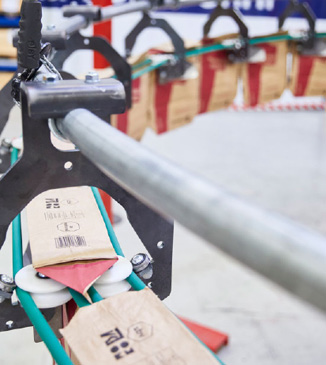NETZSCH announced the release of the new, economical STA 449 F5 Jupiter. Designed in the company’s well-established, top-loading instrument configuration, the  STA 449 F5 Jupiter provides ultimate ease of use. The instrument is optimized to offer a broad variety of measurement tasks at an outstanding price-performance ratio.
STA 449 F5 Jupiter provides ultimate ease of use. The instrument is optimized to offer a broad variety of measurement tasks at an outstanding price-performance ratio.
The STA 449 F5 Jupiter simultaneously performs Thermogravimetric Analysis (TGA) and Differential Scanning Calorimetry (DSC) on a single sample, yielding more information than separate tests using two different instruments. The test conditions are perfectly identical for the TGA and DSC signals including gas atmosphere and flow rate, vapor pressure on the sample, experimental heating rate, thermal contact to the sample crucible and sensor, and so on, according to the company.
Combining these two sets of data signals allows for differentiation between phase transformations and decomposition behaviors, distinguishing addition from condensation reactions, recognition of pyrolysis, oxidation, and combustion reactions, among other sample behaviors.
The vacuum-tight STA 449 F5 Jupiter is designed for simplicity, customized specifically for the end-user’s application. Each instrument comes pre-configured as needed including all of the hardware and software features that are required by high-temperature applications in the fields of ceramics, building materials, etc.
The instrument comes with a silicon carbide furnace (SiC) capable of routine operation to 1,600 C. At the heart of the instrument is a top-loading, highly sensitive low-drift micro-balance. In combination with a rotating motorized furnace hoist, this award-winning design allows for the sample – and, if necessary, the sensor – to be changed easily and safely. In order to implement measurement routines quickly, a unique software solution for automatic baseline correction called TGA BeFlat is included.
The system’s thermobalance covers a full 35 gram measuring range while its sensitive DSC capability enables one to accurately measure heat flow and characterize energetic behaviors. TGA measurements are also possible even on large or heavy samples.
The STA 449 F5 Jupiter comes standard with both AutoVac for automatic evacuation and refilling of the measurement system and mass flow controllers (MFCs) for precise control of purge and protective gases. This allows for the simultaneous determination of caloric effects and mass changes under both oxidizing and inert atmospheres.
Two instrument versions (with or without automatic sample changer) are available, each including a TGA-DSC sensor. In lieu of the TGA-DSC sensor, a large-sample TGA-only sample carrier or a TGA-DTA sensor can optionally be employed.
Netzsch Instruments North America LLC, www.netzsch-thermal-analysis.com




